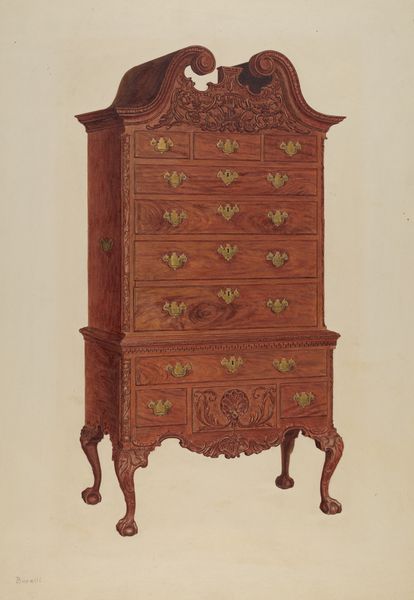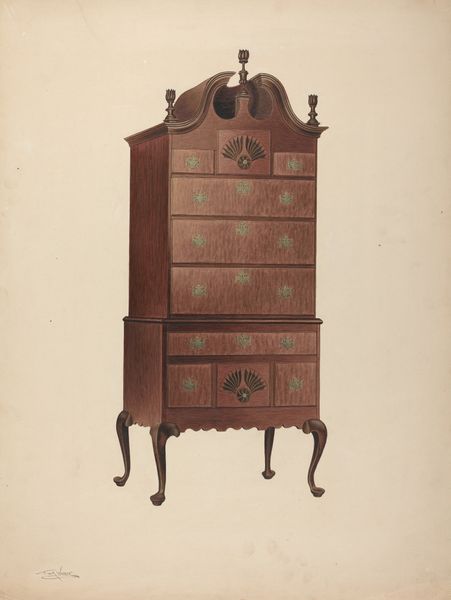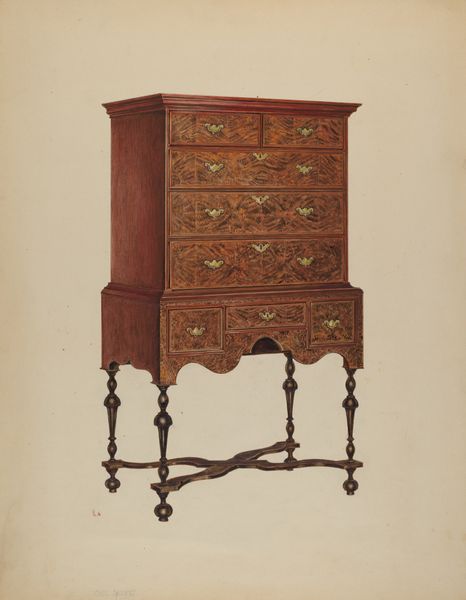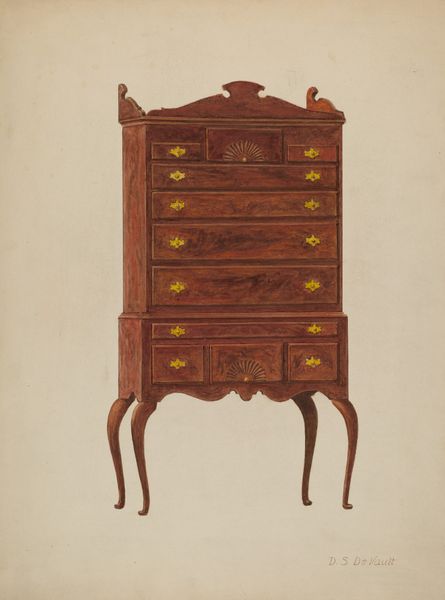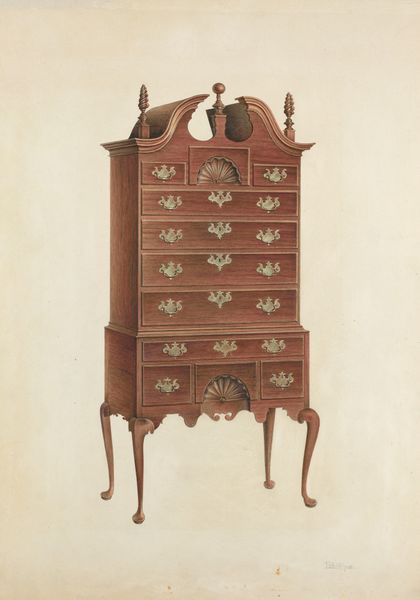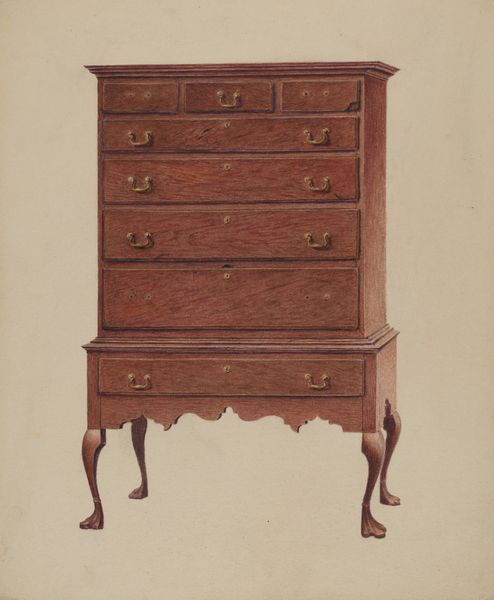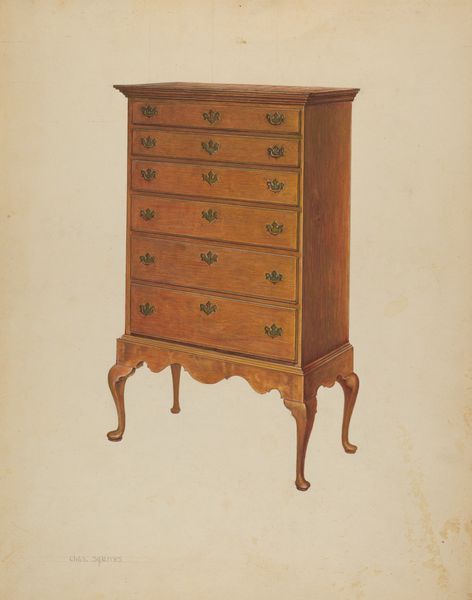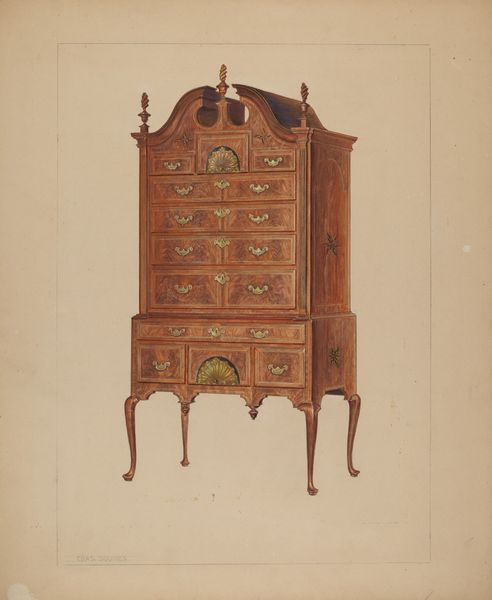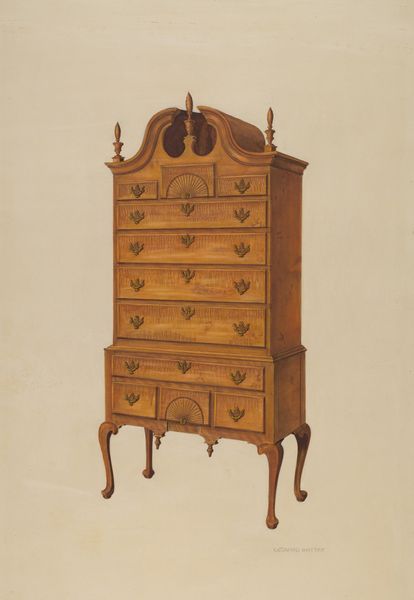
drawing, wood
#
drawing
#
ceramic
#
wood
Dimensions: overall: 38.4 x 30.6 cm (15 1/8 x 12 1/16 in.) Original IAD Object: 88"high; 23"wide; 41 1/2"long
Copyright: National Gallery of Art: CC0 1.0
Curator: Here we have a drawing from around 1937 by Harry Eisman. It’s simply titled "Highboy." What are your first thoughts? Editor: I'm getting a feeling of… contained secrets. So many drawers, each with a little ornate keyhole plate! It's like a wooden fortress holding hidden stories. And such meticulously crafted wood. Is it mahogany? Curator: Wood, yes. The drawing emphasizes its texture, that beautiful grain, it feels both substantial and warm. The highboy form itself – tall, narrow – emerged in the late 17th century, signaling rising affluence. Each drawer would hold something precious, not just clothes. Editor: Treasures! Love letters, maybe? Forgotten trinkets. The artist, Eisman, really captured the weight of tradition, didn't he? I'm struck by the swirling embellishments. There are seashell and fan-like forms, suggesting a reaching outward. Like a memory stretching into something baroque and romantic. Curator: Absolutely. These motifs aren’t random. Shells have symbolized pilgrimage, new beginnings. The fan, notions of wealth. Even the brass pulls speak to a certain aesthetic refinement. These weren't just functional objects; they projected status, family heritage. Editor: It almost seems to breathe. That curvature, the ornate carvings along the crest, feel distinctly anthropomorphic to me. Look at the legs—those ball-and-claw feet grip the floor! It is less like furniture and more like a guardian figure in our home. What sort of dreams has this stalwart witnessed? Curator: A sentinel, exactly. I think you’ve nailed the subconscious effect, especially within the context of its era. Mass production was changing our relationship to objects; handmade pieces held even more weight as symbols of continuity. This drawing emphasizes craftsmanship at risk of fading. Editor: Yes! The more I look, the stronger the connection. It feels less like a straightforward depiction, and more like a memory of handcrafted beauty. Thanks to Eisman’s skill, something beyond simple furniture. Something like longing itself. Curator: A very poignant read, reflecting how our interaction with objects transcends mere utility, especially when these items stand witness to our own pasts. Editor: Right? I walk away feeling enriched by a silent narrative. It nudges you towards contemplation… or perhaps even finally folding your socks neatly!
Comments
No comments
Be the first to comment and join the conversation on the ultimate creative platform.

